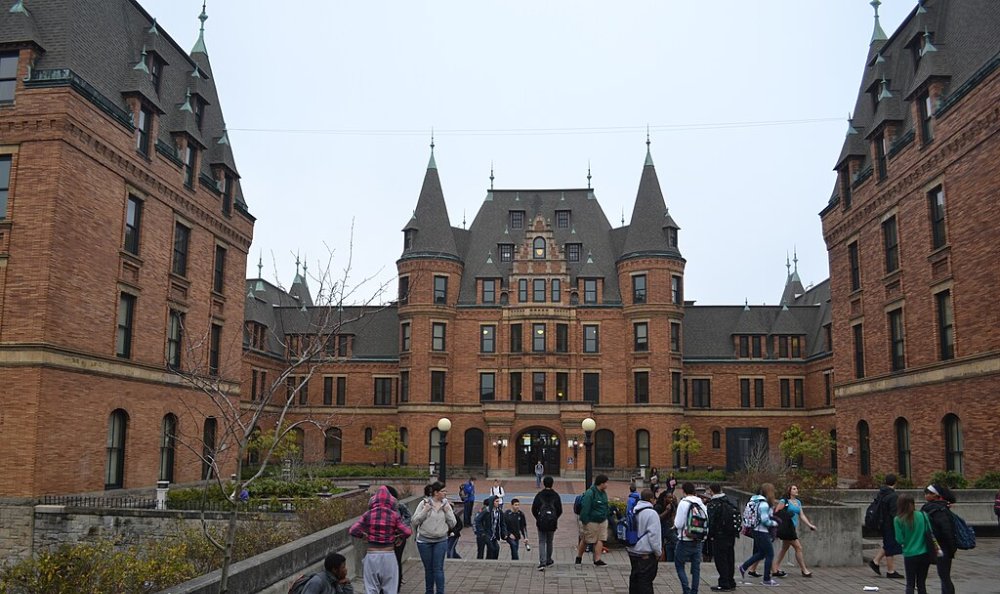On North Stadium Way, Tacoma, an unlikely fortress of Corinthian pillars and sandstone gazes across a large athletic bowl to Stadium High School.
When I last visited an exhibit at the nearby Washington State Historical Society Museum with my mother and son, we sat for tea on the roof of the museum. Commencement Bay stretched out beyond the trees, the sun was high, and the French Renaissance roof of Stadium High dominated the scene.
My mother, since deceased, was almost 90 at that time, and recalled that Stadium High provided her first formal school experience upon arriving by train in the West with her Iowa-bred family.
In 1873, Tacoma, the “City of Destiny,” became the western terminus for the Northern Pacific Railroad, beating out Seattle. To attract business, the NP built hotels at scenic locations along its right-of-way. The Tacoma site chosen for a grand hostelry was the ravine and slopes of General Morton Matthew McCarver, who built a log cabin there in the late 1860s.
McCarver’s plot was known as the old Judson claim, and it was chosen in anticipation of activity generated by the Northern Pacific’s arrival. Murray Morgan, in his book Puget’s Sound, described what McCarver saw: “an Indian canoe moving across a bay streaked by silt from the river which flowed across tide flats green with seagrasses; the mountain high and white against the eastern sky; a small sawmill in a swale of skunk cabbage to his right; to his left a shallow cove; the forest all but unbroken, the land undeveloped, the magnificent sheet of water awaiting ships.”
The Northern Pacific intended its Tacoma hotel to be one of the world’s grand chateaux. Architect Frederick Heath designed the structure to resemble the Castle of Blois in France. The front step, a single granite slab measuring 20 feet long, 6 feet wide, and 16 inches deep, was cut nearby at a location called Fern Hill.
In 1906, a fire gutted the hotel’s glittering interior. The fortunes of NP had changed by then, so the magnificent castle was converted to a school. My mother recalled standing at schoolgirl attention in uniform, watching the school’s dedication by President Theodore Roosevelt.
The school’s famous stadium, formerly a wooded gulch, shaped a steep amphitheatre. It offered a vast view of pageants and sporting events, but also of the large, shimmering Bay. At one time the seating accommodated 40,000 spectators, an amazing population for a high school at the time.
Students who attended Tacoma’s Stadium High School enjoyed an unsurpassed introduction to classical architecture and the historical periods that nurtured and inspired such wonders.
Discover more from Post Alley
Subscribe to get the latest posts sent to your email.

This is a wonderful article.
Thank you, Junius.
(sending you a smile from Commencement Bay)
I agree with CJR–this is a wonderful article; filled with an abundance of little-known information. Thank you.
When combined, the school entry and the athletic field, you have a perfect location for large scale outdoor public events.